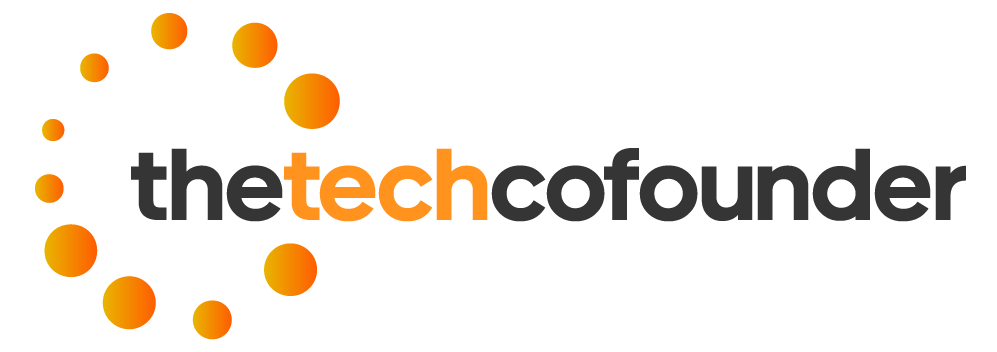In the rapidly evolving landscape of Software as a Service (SaaS), content marketing has emerged as a critical strategy for driving growth, engaging customers, and differentiating in a crowded market. While many SaaS companies understand the basics of content marketing—such as blogging, social media posts, and SEO—truly successful SaaS businesses go beyond these fundamentals to create a comprehensive, multi-layered content strategy that supports every stage of the customer journey. This article delves deep into advanced content marketing strategies for SaaS, offering insights and actionable tips to elevate your approach.
Understanding the Unique Nature of SaaS Content Marketing
SaaS products are often complex, and their value propositions are not always immediately apparent to potential customers. Unlike traditional products, SaaS offerings are typically subscription-based, requiring ongoing customer engagement and satisfaction to ensure long-term success. Therefore, SaaS content marketing must focus not only on attracting new customers but also on educating, onboarding, and retaining them.
The unique nature of SaaS means that content must address a range of challenges, such as explaining complex features, demonstrating value, and supporting users through the entire lifecycle—from awareness to advocacy. High-quality content becomes the bridge that connects your product with the needs and pain points of your target audience, positioning your SaaS solution as the best option.
Developing a Comprehensive Content Strategy for SaaS
A comprehensive content strategy for SaaS should be built on a deep understanding of your target audience, their pain points, and their journey from awareness to decision-making. Here’s how to develop and implement an advanced content strategy:
- Audience Segmentation and Persona Development: Start by segmenting your audience based on factors such as industry, company size, role, and pain points. Create detailed buyer personas that reflect the specific needs and challenges of each segment. Understanding who your customers are, what they need, and how they make decisions will guide the creation of targeted content that resonates with them.
- Mapping Content to the Customer Journey: Content should be tailored to meet the needs of your audience at each stage of the customer journey—awareness, consideration, decision, and retention. In the awareness stage, focus on creating educational content that addresses broad industry challenges and introduces your SaaS solution as a potential answer. In the consideration stage, provide more in-depth resources like whitepapers, webinars, and case studies that demonstrate the effectiveness of your solution. For the decision stage, offer product comparisons, testimonials, and detailed demos. Finally, in the retention stage, focus on customer support content, such as how-to guides, tutorials, and success stories that help users get the most out of your product.
- Content Personalization: Leverage data to personalize content for individual users based on their behavior, preferences, and stage in the customer journey. Personalization can significantly increase engagement by delivering the right message to the right person at the right time. Use tools like marketing automation platforms and CRM systems to track user interactions and tailor content accordingly.
- Building a Knowledge Base: A robust knowledge base is an essential component of SaaS content marketing. It serves as a self-service resource where customers can find answers to common questions, troubleshoot issues, and learn how to use your product effectively. A well-organized knowledge base not only improves customer satisfaction but also reduces the burden on your support team.
- Leveraging User-Generated Content: Encourage your customers to create content about their experiences with your SaaS product. This could be in the form of reviews, testimonials, case studies, or even user-submitted tutorials. User-generated content is highly credible and can significantly influence potential customers in their decision-making process. Consider creating a community platform where users can share insights, ask questions, and collaborate on solutions.
Advanced Content Types for SaaS
Going beyond blog posts and basic guides, advanced SaaS content marketing involves a diverse range of content types designed to engage and educate your audience in more interactive and impactful ways:
- Interactive Content: Tools like calculators, quizzes, and assessments can engage users by providing immediate value and personalized insights. For example, a cost calculator that shows potential savings with your SaaS solution can be a powerful tool for the consideration stage. Interactive content not only captures attention but also generates valuable data that can inform further personalization efforts.
- Video Content: Videos are particularly effective for SaaS products, as they can visually demonstrate complex features and workflows in a way that text cannot. Create explainer videos, product demos, customer testimonials, and webinars to cater to different stages of the customer journey. Hosting live webinars with Q&A sessions can also foster direct engagement with potential customers and address their specific concerns in real time.
- Case Studies and Success Stories: Detailed case studies that showcase how your SaaS product has solved real-world problems for other customers can be incredibly persuasive. Focus on quantifiable results, such as increased efficiency, cost savings, or revenue growth, to demonstrate the tangible benefits of your solution. Success stories from industry leaders or well-known brands can also enhance your credibility and attract new customers.
- Whitepapers and Ebooks: These long-form content pieces allow you to delve deep into industry trends, challenges, and solutions. Whitepapers and ebooks are particularly valuable for the consideration stage, as they provide detailed insights that help potential customers evaluate your SaaS product against competitors. Offer these resources in exchange for contact information to build your lead database.
- Podcasts and Webinars: Hosting podcasts or webinars on industry topics can position your brand as a thought leader and provide value to your audience beyond just your product offering. These formats allow for in-depth discussions, expert insights, and audience interaction, making them powerful tools for building authority and trust.
- Email Newsletters: Regular email newsletters keep your audience engaged with updates, tips, and new content. Segment your email list to send targeted newsletters that are relevant to different customer segments. Include links to blog posts, case studies, product updates, and upcoming events to drive traffic and maintain ongoing communication with your audience.
SEO and Content Distribution for SaaS
Creating high-quality content is only half the battle; ensuring that it reaches the right audience is equally important. Effective SEO and content distribution strategies are crucial for maximizing the visibility and impact of your content.
- Keyword Research and Optimization: Perform thorough keyword research to identify the search terms your target audience is using at different stages of the customer journey. Focus on long-tail keywords that reflect specific pain points or use cases relevant to your SaaS product. Optimize your content with these keywords to improve search engine rankings and drive organic traffic.
- Content Distribution Channels: Utilize multiple distribution channels to amplify your content’s reach. Share your content on social media platforms, industry forums, and online communities where your target audience is active. Leverage email marketing to promote new content to your subscribers. Consider partnering with influencers or industry publications to expand your reach further.
- Paid Promotion: Complement your organic efforts with paid promotion strategies, such as search engine marketing (SEM), social media ads, and sponsored content. Target your ads to specific audience segments based on demographics, behavior, and interests to maximize relevance and ROI. Paid promotion can be particularly effective for promoting high-value content, such as webinars, whitepapers, and case studies.
- Link Building and Backlinks: Build high-quality backlinks from reputable websites to boost your content’s authority and improve its search engine ranking. Reach out to industry blogs, publications, and partners to secure guest posting opportunities or content collaborations. Create shareable content, such as infographics or research reports, that other websites are likely to link to.
- Performance Tracking and Analytics: Use analytics tools to monitor the performance of your content across different channels. Track key metrics such as traffic, engagement, conversion rates, and ROI to evaluate the effectiveness of your content strategy. Use these insights to refine your approach, focusing on what works best for your audience and business goals.
Content Marketing Metrics for SaaS
To truly go beyond the basics in SaaS content marketing, it’s essential to track and measure the right metrics. These metrics will help you understand how well your content is performing and where improvements can be made:
- Customer Acquisition Cost (CAC): Measure the total cost of acquiring a new customer, including content marketing expenses. A lower CAC indicates a more efficient content strategy.
- Customer Lifetime Value (CLV): Calculate the total revenue a customer is expected to generate over their lifetime. Compare this against your CAC to assess the long-term value of your content marketing efforts.
- Churn Rate: Monitor the rate at which customers stop using your SaaS product. Content that effectively educates and engages customers can reduce churn by ensuring they see ongoing value in your product.
- Lead Quality and Conversion Rates: Track the quality of leads generated by your content and their conversion rates. High-quality content should attract leads that are more likely to convert into paying customers.
- Engagement Metrics: Analyze metrics such as time on page, bounce rate, and social shares to gauge how well your content is resonating with your audience. High engagement indicates that your content is valuable and relevant to your readers.
- Content ROI: Calculate the return on investment for your content marketing efforts by comparing the revenue generated from content-driven leads with the cost of content production and distribution. A positive ROI confirms the effectiveness of your content strategy.
Continuous Improvement and Experimentation
The most successful SaaS content marketers are those who continually experiment and adapt their strategies based on data and feedback. Content marketing is not a static process; it requires constant refinement to stay ahead of industry trends and changing customer needs. Regularly review your content performance, gather insights from your audience, and test new ideas to discover what resonates best with your target market.
Incorporate A/B testing into your content strategy to identify the most effective headlines, formats, CTAs, and distribution channels. Experiment with different content.







